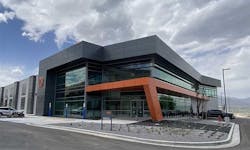Last week, we launched a special report series on virtual interconnection. This week, we’ll look at why the future of IT infrastructure is software-driven.
Get the full report.
To wean themselves from legacy infrastructure, organizations need to virtualize as much as possible.
Virtualization technology enables business agility by separating physical infrastructure from the applications that use it. This creates the foundation for software-defined infrastructure, in which hardware is treated as a single virtual pool that can be managed almost entirely in software, thus permitting automation to be applied at scale.
Virtualization technology has been used in data centers for many years to consolidate workloads on a small number of physical servers that operate at high capacity. Nearly any kind of infrastructure can now be virtualized, including storage, networks, desktops, and even data. Removing physical hardware dependence from the equation enables greater flexibility by allowing IT organizations to replace expensive proprietary hardware with low-cost commodity devices and to more easily accommodate peaks and valleys in demand.
Redundancy is built into software-defined infrastructure. If a piece of equipment fails, other resources can instantly be deployed to take over, often without any noticeable impact on performance.
Software-defined infrastructure is an evolution of virtualization in which the entire IT resource is managed as a single pool. This allows resources to be utilized more efficiently because they can be allocated as needed to accommodate demand. There are numerous advantages to this approach.
- Centralized, policy-based controls accelerate deployment and updates, in most cases eliminating the need for manual intervention.
- Redundancy is built into software-defined infrastructure. If a piece of equipment fails, other resources can instantly be deployed to take over, often without any noticeable impact on performance.
- Major upgrades and refreshes are less frequent because new equipment can be slipstreamed into production without downtime or disruption.
Just 30% of organizations had virtualized networks as of last year but adoption is likely to grow at double-digit annual rates going forward. Organizations that act quickly to adopt network virtualization can steal a march on their competitors.
- High levels of automation are enabled because most functions that previously required manual intervention can be implemented in software. This yields vast productivity benefits by enabling infrastructure to be deployed and managed as part of automated workflows, reducing provisioning times from days to minutes, and eliminating the need for manual intervention in most routine management functions.
- Many services can be deployed and modified without costly field visits. This can save weeks of time in a scenario such as setting up field offices or onboarding new employees.
- Software-defined infrastructure is less vulnerable to a physical attack because single points of failure are all but eliminated.
- Cloud-based identity-management tools support automated and centralized administration of users and access controls at a granular level.
- The risk of vendor lock-in is reduced because the software virtualization layer abstracts away underlying dependencies. That lowers costs and provides organizations with more choice.
Server virtualization is a mature technology that is now used by 92% of businesses, according to Spiceworks research. Other categories are still moving up the adoption curve. For example, the study found that just 30% of organizations had virtualized networks as of last year but adoption is likely to grow at double-digit annual rates going forward. Organizations that act quickly to adopt network virtualization can steal a march on their competitors.
Download the full report, How Virtual Interconnection Supports Distributed Digital Business, courtesy of DataBank to learn more. In our next article, we’ll look at the benefits of virtualizing interconnection. Catch up on the last article here.





